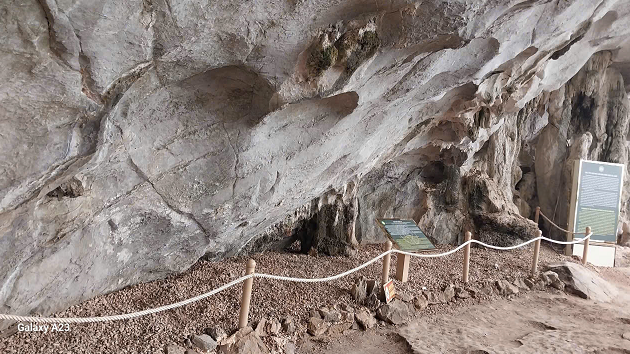The Cultural and Historical value of Me Cung Cave
Ha Long Bay is not only famous for its majestic, poetic landscapes but also carries within it a rich and ancient cultural history. This heritage is vividly reflected in many of the bay's limestone caves. Among them, Me Cung Cave stands out as a significant site tied to the Soi Nhu and Ha Long prehistoric cultures.
Located on the Lom Bo Island range, along Route 2 of Ha Long Bay tours, Me Cung Cave greets visitors at its entrance with a remarkable sight: a layer of fossilized freshwater snail shells. Based on this sediment, scientists have confirmed that prehistoric humans once lived here when Ha Long was still a continental environment. These early inhabitants sought shelter in caves to protect themselves from harsh weather and wild animals, and lived by gathering fruits, snails, and shellfish from freshwater streams.
They also used primitive stone tools-rough flakes, scrapers, and grinders-for daily tasks like cutting or food preparation. Some shell remains are charred, indicating that they had already discovered how to use fire for cooking, marking a major leap in human development-from eating raw food to preparing meals with fire.
Not only at the entrance, but even inside the cave, visitors can find remnants of freshwater mollusk shells-clams, mussels, and more-on the cave floor.
Deeper inside, in the third chamber, beyond the allure of stalactites and stalagmites, visitors can admire a prehistoric stone tool still embedded in the cave wall. This artifact was discovered by Ha Long Bay Management Board staff during a field survey in 2008. Measuring approximately 4 cm wide, 30 cm long, and 1.5-2 cm thick, the tool features a handle-like base, suggesting it could be handheld or hafted onto a shaft.
According to Assoc. Prof. Dr. Trinh Nang Chung, a leading expert on the Stone Age from the Vietnam Institute of Archaeology, this could be a stone spearhead used for self-defense or hunting. He noted that, as of now, it is the longest prehistoric spearhead discovered in Vietnam. It is considered an invaluable artifact and likely belongs to the Ha Long Culture period.
In a later survey conducted in May 2016, Dr. Chung further theorized that this spearhead might actually be a burial object, possibly placed with a prehistoric grave, based on comparisons with other Stone Age cultures.
Furthermore, in 1996, scientists also discovered semi-fossilized animal remains in the cave’s third chamber. Although most of the skeleton was fragmented, four long bones remained intact. These bones were dated to the same era as the snail shell sediment. Some researchers suggest they may have been part of a ritual animal offering, used in spiritual or ceremonial practices by prehistoric people.

The cultural and historical values further enhance the exceptional and timeless beauty of Ha Long Bay - a UNESCO World Natural Heritage Site. We warmly invite you to come and experience it for yourself!
Translated by Thuy Ha
